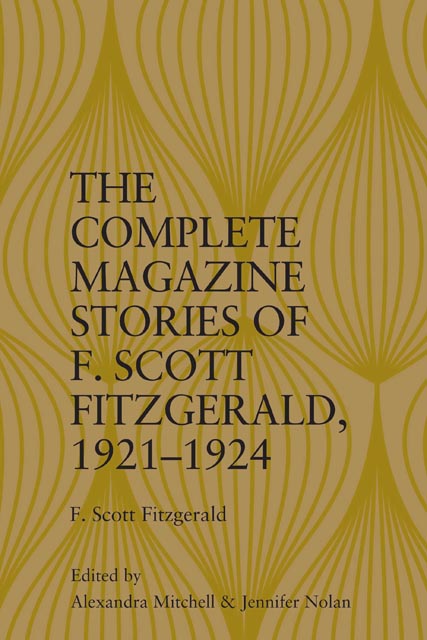Book contents
- Frontmatter
- Contents
- List of Figures
- Acknowledgments
- Introduction
- Stories
- Explanatory Notes, by Alexandra Mitchell
- Appendix 1 Ngram Language Analysis, by Alexandra Mitchell
- Appendix 2 Magazine Publication Details, by Jennifer Nolan
- Appendix 3 Visual Contexts of Fitzgerald’s Magazine Market, Images introduced and compiled by Jennifer Nolan
- Works Cited
Appendix 3 - Visual Contexts of Fitzgerald’s Magazine Market, Images introduced and compiled by Jennifer Nolan
Published online by Cambridge University Press: 18 November 2023
- Frontmatter
- Contents
- List of Figures
- Acknowledgments
- Introduction
- Stories
- Explanatory Notes, by Alexandra Mitchell
- Appendix 1 Ngram Language Analysis, by Alexandra Mitchell
- Appendix 2 Magazine Publication Details, by Jennifer Nolan
- Appendix 3 Visual Contexts of Fitzgerald’s Magazine Market, Images introduced and compiled by Jennifer Nolan
- Works Cited
Summary
As described in the introduction to this volume, this appendix includes three sets of materials.
To demonstrate the visual contrasts between the two different ends of Fitzgerald's market – that is, the higher-brow, lower-circulation, lower-paying smart magazines and the lower-brow, higher-circulation, higher-paying popular magazines – this appendix includes the covers and opening pages of two of Fitzgerald's stories published in 1922. The first set features the June 1922 cover of the Smart Set where “The Diamond as Big as the Ritz” was published and the unadorned first page of the story, while the second set features the cover of the December 1922 issue of Metropolitan and the illustrated first page of “Winter Dreams.” Gabrielle Dean has usefully suggested that “cover design serves the prima facie purpose of marking basic divisions in the periodical taxonomy,” which is evident in the contrast between these two covers. As she argues, in the early 1920s, “to reinforce the reader's culturally elite, modern credentials, [Smart Set] cover images had to be genuinely startling, intriguing, lively, or mischievous,” as seen in A. G. L's modishly angular dancers, while, as I have argued, Frederick Duncan's cover girl is part of Metropolitan's “attempt to position itself as an authority on young women” to save itself from financial ruin. The visual differences between the austere first page of “The Diamond as Big as the Ritz” and the expressiveness of Arthur William Brown's dominating opening illustration for “Winter Dreams” are also striking representations of how differently each magazine was presenting itself and the work it published.
The final set of images reproduces the entirety of “Gretchen's Forty Winks” from the 15 March 1924 issue of the Saturday Evening Post, along with the facing advertisements, to provide modern readers with a sense of what Fitzgerald's stories looked like embedded within these highly visual and commercial spaces. As I have argued elsewhere, readers of Fitzgerald's stories in the Post encountered the text within a nexus of other materials that shaped and directed how the stories were read and understood. In this case – which is discussed in greater detail in the introduction – the illustrations and surrounding advertisements reinforce the commercial values of the magazine and seeing them together vividly emphasizes the interrelationship between literature and commerce in these spaces.
- Type
- Chapter
- Information
- The Complete Magazine Stories of F. Scott Fitzgerald, 1921-1924 , pp. 404 - 417Publisher: Edinburgh University PressPrint publication year: 2023



